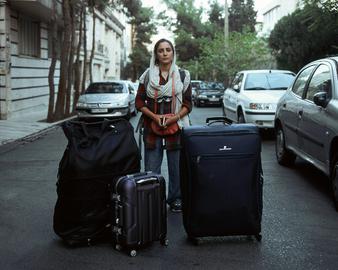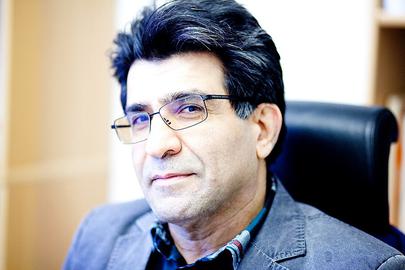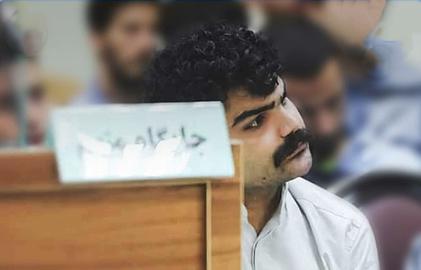Earlier this week, a member of Iran's Chamber of Commerce announced that it was no longer just highly-educated professionals who were moving abroad, but that plumbers, carpenters, hairdressers, chefs and electricians — what he described as “ordinary” Iranians — were also lining up to leave.
So what’s behind this phenomena? Why are so many people pursuing life beyond the borders of the Islamic Republic, leaving the land of their birth and their families and friends to make a new life in a foreign country where they must learn new languages and new customs and lifestyles? And what will be the impact on Iran's fragile economy and crumbling society?
IranWire spoke to sociologist Mehrdad Darvishpour, a professor at the Malardalen University in Sweden, Hiva Sarvari, an Iranian living in Manchester in the United Kingdom and working as a cabinet maker, and Javad, an electrician based in Tehran.
***
Recent Trend of Semi-skilled and Unskilled Workers Leaving Iran
In the 1960s, Iranian workers, many of them villagers or people from the suburbs of cities in Iran’s southern provinces, began migrating to neighboring countries to the south. With the end of the Iran-Iraq war in the late 1980s, many young unemployed Iranians traveled further afield to Japan after being granted a Japanese government permit to travel and work.
But for the most part, in recent decades, Iranian workers have mainly traveled to neighboring countries including Turkey, Iraq’s Kurdish region, Kuwait and the United Arab Emirates, with the intention of earning money and returning to Iran. By the mid-1970s, nearly a third of Kuwait's population were Iranian workers.
So, as Iranian Chamber of Commerce member Hamid Hosseini pointed out this week, it’s alarming that Iran’s semi-skilled and unskilled laborers are now leaving for good. Iran’s policymakers, he says, should be paying close attention.
Economic Hardship Pushing People Away
Hiva Sarvari, a 30-year-old Iranian who sought refuge in Britain in 2015, now works in a cabinet fabrication unit in Manchester. "The best thing I did in my life was emigrate," he told IranWire. "I was a furniture maker in Iran. I did not even dream about the things I have here."
The Sarvari family migrated from their village in Kurdistan province to Ghaleh Hassan Khan on the western outskirts of Tehran in the early 2010s. He lived with his mother before emigrating to Britain.
"I got a mortgage on a house here, I bought a car in the first year and I go to Spain or Italy once a year," Sarvari, who is a Christian convert, says."These things were not possible at all in Iran, even though I lived at my mother's house and my brothers helped with my mother's expenses.
"I have freedom here and I can choose my religion. I am more comfortable in my relationships with people and I can drink. It may sound ridiculous, but in the workshop where I worked in Iran, my employer was religious and there were all kinds of drugs available there, but we were not allowed to drink alcohol, even outside the workplace. My employer was an opium addict, and everyone except me and one other person were drug addicts."
Javad, an electrician still in Iran, says he has plans to emigrate as soon as he can. "I am my own boss and I earn between 10 and 15 million tomans a month depending on the amount of work and contracts I get. If I was able to not spend anything and save all my money, I could save between 120 and 180 million tomans ($4,500 - $7,000) per year. But what good is this money? Every year that same amount is added to my rent. House prices are never under two billion."
He says his friend, who, despite not having the same skills he does, immigrated to Canada. "My friend did not have anything here, but now he is an electrician in Canada. Because he knew how to work, he graduated after a short time in college. Now he is driving an Acura car and has bought a big house."
Women and Young People are Leaving — And They Don’t Plan to Return
"The migration of semi-skilled and skilled labor from peripheral countries [countries that have been exploited by other countries] to the West is common,” says Mehrdad Darvishpour, whose research as a sociologist has focused partly on migration and gender. “People want to improve their economic situation or confront the lack of prospects for the future. They go to neighboring countries or to Western countries."
But he says the growing trend of people not returning to Iran after earning money, across all skill levels, is alarming and unprecedented.
“Throughout the history of Iran, migration to the West has been more from the affluent classes. Although we have seen the migration of workers to Baku or other cities in neighboring countries in the Persian Gulf, it is not comparable to the current scale of economic migration, which now extends to semi-skilled workers. This reflects the fact that there is no promising prospects for the future in Iran, given the economic crisis, inflation, rising prices, unemployment and declining wage levels.
"The younger generation and women are the most desperate groups because of the double discrimination and the lack of a bright future, as well as the fact that there is a wider value gap between them and the Islamic regime. They see no future and therefore have a greater tendency to migrate. For younger people, the fact that they have more time to invest in the future strengthens their motivation to migrate.”
Darvishpour also points to ethnic discrimination as another factor driving migration.”Among the impoverished classes, for whom migration is on the rise, are oppressed ethnic groups, especially Afghan immigrants, who are the least likely to have a decent future in Iran. The widespread migration of young Afghans born and raised in Iran, despite their poverty, is marked by severe ethnic discrimination against them."
Unlike in the past, when political or social reasons were part of a person’s reasons to leave, many people leaving today on economic grounds alone — proof that Iran’s economic crisis is severe. ”In Iranian society today, the number of middle-aged groups of people who are not necessarily politically motivated or concerned with social issues and who want to emigrate for economic reasons alone is on the rise.
Iran’s Shifting Future
Darvishpour says the rise in economic migration of workers is a clear indication of growing impoverishment in society
"Even if we leave out the politically-motivated migration of groups such as writers, intellectuals, civil and political activists who find themselves under pressure, economic migration — especially among the semi-skilled labor force, which is the social and human capital of the country — is a great blow to Iranian society.” Iran’s economic crisis is bound to deepen, he says.
"With the migration of these forces to the West, the main profit goes to these countries. On the other hand, an irreparable gap is created and skilled labor must be replaced. This, along with many other economic and social problems, will make society poorer."
He refers to the "dynamics of marginalization," which he said can be seen at all levels, including national and transnational levels. "In the marginal areas of a country, many leave peripheral areas or poor countries as soon as possible, and those peripheral areas or countries are faced with the departure of their social capital and skilled labor. They become more marginalized and poorer. Unfortunately, Iran is facing this reality."
However, Darvishpour also says a certain amount of lost capital does return to the country of origin as part of an "intra-national economy,” meaning that many people who leave do end up sending money back to their home country. "It is not clear to me in the case of Iran, given that economic migration is often accompanied by political, social and cultural dissatisfaction, how much return of investment occurs through the investment of well-off migrants,” he says. "Given the structure and policies of the government, economic sanctions, and international tensions with the authoritarian Islamic regime in Iran, it is not clear Iranian immigrants feel secure about wanting to invest in Iran.”
He points out that leaders of Iran and of other authoritarian governments have lost a certain degree of power within the borders of their countries, given the way that economies and cultural contexts are changing and diversifying, and the fact that migration is a part of this. Immigrants are a driving force in initiating changes in their home countries because of what they bring or send back. This is not just about money, it’s about importing other values or approaches too.
At the same time, Mehrdad Darvish says, rich countries are introducing more rigorous and stringent immigration laws, and this has an impact on this cultural and economic cross-country fertilization. It also means that not every Iranian who wants to leave the country can. "Western countries have eliminated the possibility of millions of Iranians migrating by tightening immigration and asylum laws. If there were more open doors in European countries, Iranian society would probably face a massive wave of millions of emigrants fleeing in less than a year, and this would be an even larger demographic threat than what we see at the moment."
Related coverage:
Plumbers, Hairdressers and Electricians Join the Long List of People Leaving Iran
Fact Check: Does Iran Suffer From a Brain Drain and How Serious Is It?
Civil Rights Activists Systematically Forced to Emigrate
visit the accountability section
In this section of Iran Wire, you can contact the officials and launch your campaign for various problems



























comments